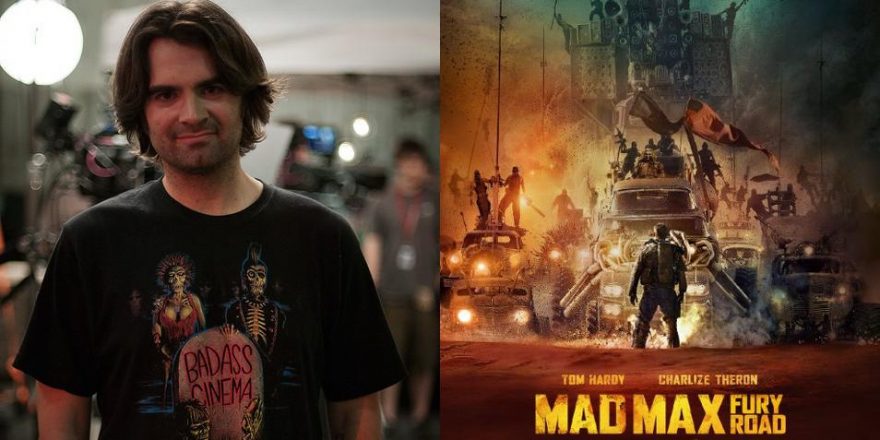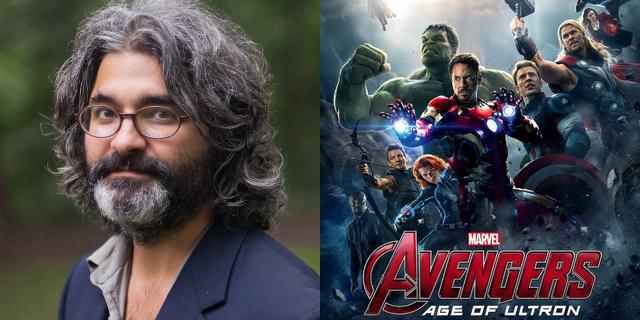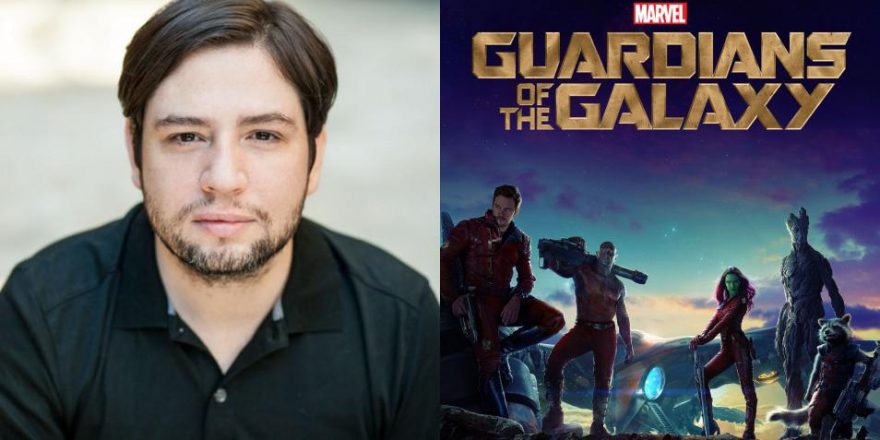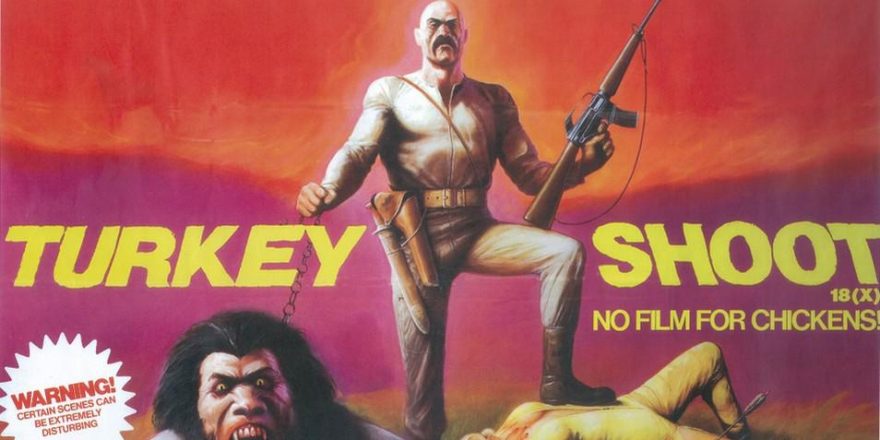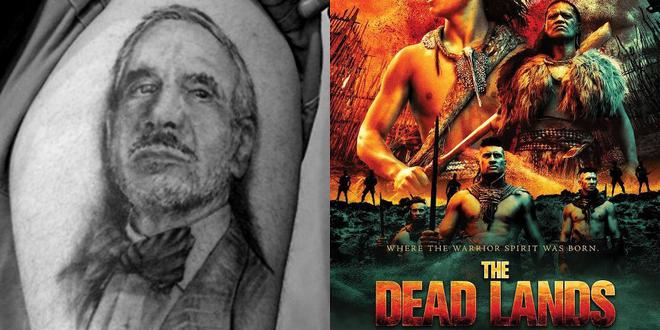PROLOGUE:
Much like how another George — of the Romero clan — inadvertently created the zombie sub-genre with his seminal 1968 horror film Night of the Living Dead, Australian writer/director George Miller invented the post-apocalypse movie we know, love and fear. With his first feature, Mad Max, budget constraints pushed him to imagine landscapes that were sparse, uninviting, quiet with danger — until, of course, that silence was shattered by heavy-metal machines and punk-rock crazies. Miller’s vision for this new “Western” mixed with sci-fi future-shock trappings clearly struck a nerve globally, as the first Max injected his and Mel Gibson’s career with nitrous.
Their second collaboration, Mad Max 2: The Road Warrior, took the formula set by necessity and built a larger scope around our beaten, battered titular character as he reluctantly aided a small band of survivors under attack from Wasteland crazies hellbent on taking their fortress. The world of Road Warrior was bigger and more barren; the stakes were higher, with fewer civilized folk and more shoulder pads, horrifying hockey masks and need for gas to fuel one’s own power. And Max seemed more perturbed than ever. Road Warrior was Mad Max on speed, if that’s even possible; the storytelling was denser, and the chase scenes were more complex, now actual set pieces rather than just sudden bursts of speed and popping eyeballs. Miller kept true to his unique, energetic style, again employing many of the same cinematic tricks as in the first Max film, from his use of camera — keeping the lens low to the ground and the movement within the frame kinetic — to editing that predated MTV with its whiplash style and almost subliminal edits (see: popping eyeballs).
Then came Beyond Thunderdome, a more studio-led affair that was clearly the Return of the Jedi of the original Max trilogy. The kid-friendly climax didn’t quite stick the landing and the movie relied on a band of furry moppets to open up the demo a bit, but it still had some of Miller’s trademark flourishes. Even if Miller himself was going through a tough time (his producing partner, Byron Kennedy, died in a helicopter crash during pre-production, leaving Miller distraught to the point where he had to bring in a co-director), Beyond Thunderdome delivered some of the same energy and bonkers apocalypse we’d grown accustomed to. However, most of the global cinema industry had finally caught up to Miller’s dour, sun-baked vision of the future, churning out multiple imitations like The New Barbarians, Steel Dawn and Metalstorm: The Destruction of Jared-Syn, leaving the Max saga’s impact waning with each cheap knock-off. And the director himself was drawn to other realms of storytelling; from the dark girl-power comedy The Witches of Eastwick to the woefully underappreciated medical/family melodrama Lorenzo’s Oil to his later stint as a family-film journeyman with the Babe and Happy Feet series, Miller seemed to want to linger in the here and now for a bit and leave the future, and our friend Max, in the dust.
Much has been written on Mad Max: Fury Road’s long trek to the silver screen, so I’ll spare you the history lesson. However, at 70 years of age, George Miller seems to have peeled back the crust from our CG-jaded eyes to show us what real cinematic exhilaration is, and while Fury Road might feel fresh in a basket of moldy summer blockbusters and endless remakes (which, in a way, Fury Road is itself), Miller uses some of the oldest tricks in his book to make the latest chapter in Max’s vision quest feel new all over again.
NOTE: The following is more of an appreciation piece for your second viewing evaluation and pleasure. It’s not a review, but if you want one, try this: “A High-Octane Two-Hour Cineboner Spectacular.” OK? Moving on.
A PERSONAL NOTE:
Now that we’re caught up a bit, let me get personal for a moment. I love this series. When I was six, I remember seeing Road Warrior on HBO and being terrified. Thanks to the scene in which Lord Humungous loses his lover (?) to the sharp blade of Feral Kid’s boomerang (still the coolest continent-specific weapon in this entire saga), it was one of the movies that injected the idea of death into my psyche. When the boomerang drove into the poor blonde boy’s skull, the music swelled to all the dread notes, leaving my young brain reeling… “That goalie is gonna be REALLY sad now!” Miller actually instilled emotion into this otherwise hulking antagonist, and it affected me deeply. Aside from that life lesson, what kid is not gonna love seeing tons of speeding metal crashing into one another? So I was a fan of Max from that day forward, and begged my mom to rent Mad Max, so I could catch up, when Beyond Thunderdome was about to be unleashed in 1985. I even began, with Beyond Thunderdome, to pick apart certain camera shots and editing techniques, from the crane shot that invites us into Bartertown to the multiple times the camera seems to speed up, not quite knowing how the filmmakers did it, but why.
Even before I knew what cinematic explication was, I was pulling up the hood on these films and examining the techniques Miller used, to see how they affected me as a viewer. The Max series inspired me to try my hand at editing as well. At the time, I had also been influenced by MTV and saw how music and visuals, when mixed and matched in a certain way, created a strange symbiosis, a feast for the senses. So, figuring out how to set up two VCRs and mastering the art of the REC/PAUSE button combo, I began to edit “remixes” of movies using songs I loved, which I would bring to parties in a half-desperate attempt to look cool. I might have failed on that front (although my mashup of Lethal Weapon 2 and Pantera was pretty epic), but it did fuel me with a passion for editing, and my first “project” was to take the climactic train chase scene in Beyond Thunderdome and cut it to A Tribe Called Quest’s “Scenario.” Breaking down shots — moments of action and emotion — in that sequence, and placing them over the driving beat and groove and lyrics from that song, taught me how crucial shot placement and editing were to “pure cinema,” the kind that relies on visuals and sound, rather than dialogue, to propel the story and elicit a viewer response. Again, it might not have made me the hit of the party that Friday night, but I didn’t care; I remember being so jazzed watching something I created playing on my friend’s huge (for 1991) 27-inch screen, my first fix as a filmmaker. My “collaboration” with George Miller was, at least to me, a huge success, and it made me appreciate the many stylistic tricks in his shot and edit constructions. For many years, his films were the fuel to my fire.
So when Fury Road was announced way back in 2001, I had my engines started. I couldn’t wait. I had loved Miller’s other films away from the sandstorms, especially Babe (which his influence was all over, though he did not direct), but hearing he was strapping his cameras back onto the gas-guzzlers was music to my ears. Sadly, my engines have been idling for almost 15 years as Miller and his band of artists traversed numerous setbacks and delays, including losing the original Max, “Mad” Mel Gibson, for that guy from Bronson, who seemed crazy enough to strap on the leather and shoulder pads. But would this be more in line with what we wanted from the series, another Road Warror? Or would it be a studio-homogenized version, like Beyond Thunderdome? Or worse… Steel Dawn 2?!
When the first Comic Con trailer hit, many of us pumped our fist in the air, as our hopes that this flick would kick our asses was rewarded with a melange of explosions, flipping cars and the capper, a subtle “thumbs up” from our new Max Rockatansky. I was in, and like many, freeze-framed each subsequent trailer to death and back again. This was my summer movie to beat. Avengers who? Jurassic what? I was all about Max.
RIDING THE FURY ROAD
And then it finally happened.
Opening night, the historic Grauman’s Chinese Theatre, screened in IMAX 3D using a new laser projection system. My expectations for a movie hadn’t been so elevated since I saw Pulp Fiction back in 1994 (and you can read how that went here); I was trying to temper my excitement, but it was tough. When the film ended and the interestingly quiet final moment was projected on screen, I was finally able to wipe the tears from my face — because I hadn’t blinked for at least the last 20 minutes and my eyes needed the lubrication. Mad Max: Fury Road had somehow exceeded my (and, judging from its critical reception, many others’) expectations, which were pretty tall to begin with. Yet what shocked me was how Miller didn’t conform to the tricks of the modern trade with his visuals, but rather employed techniques (low, wide angles, flash frames, subliminal cutting and sudden speed ramping, etc.) that could have be seen as dated. And somehow, all these tricks work like gangbusters, creating a tapestry of visual kinetics that, to a viewer used to the bombastic style of the modern action film, might not seem old-fashioned but radical and punk rock.
This is what surprised me the most, walking out of Fury Road: while most filmmakers of his age feel the need to modernize their style to match today’s fickle audience and younger directors either ape their heroes’ styles or create their own based on the technology and techniques of the age, Miller stands alone. He seems determined to show the world that he’s still got what it takes to quicken our collective pulse without resorting to the visual crutches that, on paper or a spreadsheet, seem to be easier and safer to execute but don’t have the same life and energy. As a filmmaker myself, now fully ensconced in the working mechanics of making an action film (having just finished a crazy little film called Everly, now available on DVD, Blu & VOD!), it’s hard not to appreciate how using old-school techniques, from the cinematography to the direction and stunt work down to the post process, has created something fresh for today’s audience while still using the wasteland language Miller established almost 40 years prior.
1. Cinematography
When Miller and cinematographer Dean Semler first worked together, they gave us a widescreen landscape like no other with The Road Warrior. Dread and despair never looked so lush or exciting, with a scope that was more akin to sweeping John Ford westerns than scrappy sci-fi action flicks. This was one of Road’s hidden weapons, not fully appreciated until the advent of LaserDisc and DVD, when viewers were finally treated to the film in its proper 2.35:1 aspect ratio, the edges of the frame curving into itself to give the audience an idea of a world without hope enveloping the camera’s point of view. Miller and Semler reunited to kick the dust off their boots once more in ’85 with Beyond Thunderdome, yet never worked together again. When Miller hired Lorenzo’s Oil d.p. John Seale (like Miller, now in his seventies) for Mad Max: Fury Road, some feared these two older gents might not be able to bring the same attitude and spunk that Miller and Semler did back in the day. Yet for anyone had seen Seale’s work on The English Patient, The Hitcher or The Mosquito Coast, it felt like a natural fit for Fury Road’s open road meets urban jungle angle.
Miller supposedly wrote the initial script in images, storyboarding each moment in fine detail to highlight the “pure cinema” approach of this wild ride. This seemed pretty bass-ackwards to many, yet the results are astounding. Every shot — from the long, aerial angle of the warring factions converging on the deserted battlefield to the inserts of feet on pedals and hands on drive shafts — feels vital and important, like a puzzle piece. The world in Fury Road is in the details, and nothing Miller puts on screen is extraneous. Everything has a reason to be shown and Seale is there to spice up even the most modest shot with a vital energy.
Seale, for years a journeyman d.p. on studio movies, feels like an artist unleashed with this film, framing and lighting moments with a young man’s vitality. He keeps action moving in and out of the frame constantly and, in true Miller fashion, uses wider lenses for moments that usually don’t require a more distorted vantage, creating a more naturalized, organic energy. Miller over the years has been known for his dynamic “dolly shot in,” in which the camera glides closer to the subject, be it an actor’s face or a speedometer, but here in Fury Road these shots feel like the film is grabbing you by the collar and not letting you go.
Another older technique used is “day for night,” where a scene is shot during the day but is given the feeling of nighttime through the use of camera filters and color-timing in post. With SLRs and digital cameras with higher low-light exposure capabilities, there is now little need for this technique, but it has a very particular look and in Fury Road’s second act gives the screen a blue-hued tension that effectively hints at what the night holds for Max, Furiosa and the gang.
Now, since Max Max and Road Warrior, camera rigs and cranes have come a long way from the days of duct-taping a camera to the hood or a car or to the middle of a two-by-four. Cameras with 4K high definition can be sent up into the sky on remotes. Cameras are now attached to moving cranes on a high-speed vehicle, giving the filmmakers the ability to capture death-defying angles without precariously strapping the camera operator to a motorcycle. Technology has made it very easy to take our breath away. Yet, even with these new toys in the toolshed, Miller and Seale consistently frame and execute shots in Fury Road with the same formula honed in Road Warrior, using speed right under the low-angle frame to quicken the pulse, or framing a character to the side to allow the desolation of the setting to overpower the scene, adding to the dread looming beyond the horizon. Instead of conforming to new technology, Seale and Miller somehow retrofitted these cameras and cranes to do their bidding, leaving us with a look that is undeniably Max-esque.
2. VFX & Stunts
By now, you’ve likely heard that Miller used very little CG in the film (at least for a $150 million movie), and that all of the body-flying and car-crashing was done “on the day,” which adds to the fun danger I remember feeling as a kid when I wasn’t easily able to point out a digital stunt-person. (There was a charge knowing people could have died for our enjoyment!) In Fury Road, it’s not only the use of real flesh and bone in these sequences that makes the difference, but how infrequently the term “fix it in post” must have been heard on set in that hot Namibian desert. It’s here that the impact of Fury Road might be the most evident, as the scene featuring the Polecats (those freaky dudes on the long staffs who are bending around in the air, trying to pluck an escapee from freedom) or the mighty climax where Max and Furiosa decide to backtrack to the Citadel (when does that happen in a movie?!) benefit from intense stunt work which put lives at risk rather than just using CG stunt doubles.
Having done some pretty intense action scenes with copious amounts of stunt work in Everly (though, trust me, nowhere near anything like Miller did here), I understand that the time it takes to set up stunts — not to mention the physical risks — leads many filmmakers to choose CGI as a workflow fix, but this technological streamlining of the movie-making process has resulted in a less human investment in the on-screen action. With Fury Road, Miller made the choice to involve his cast in the action whenever possible, even in moments as simple as seeing Max and Furiosa talking in the big rig’s cab while stunt teams in the distance are jumping ramps and crashing cars, things that could have easily been comp’d in with VFX plates. Placing real people in all forms of the action only intensifies the mise-en-scène, giving the audience a more direct sense of danger. This is what action cinema is always trying to achieve: the safe danger, the kind we can walk out of a darkened theater and brush off with a laugh and a smile. Miller reminds us that the best action is the kind where everyone’s getting their hands (and in this case, everything else) dirty.
3. Editing
It’s in the editing, though, that Fury Road feels most like a Mad Max movie, while also injecting some fresh life into stale techniques of recent years. It’s amazing that Miller shot more than 400 hours of footage and apparently he and his editor Margaret Sixel (also his wife) were meticulous in trying out numerous ways of cutting together each sequence. This is the first Max movie to be edited digitally, and Miller takes advantage of the advances in technology and techniques to dive back into his old bag of tricks, usually finding the most effective cuts are not the ones we’re accustomed to from modern moviemaking.
At first, it might throw some off when the film deliberately speed-ramps to heighten the action, adding some velocity or ferocity to a moment. This technique is rarely used anymore, having made way for more polished tricks popularized by Michael Bay and Zack Snyder (who I hope both took notes when they watched this flick). In the complex construct of Miller’s chase scenes, these moments prove incredibly potent, like visual exclamation points. There’s even a moment when someone is punched in the face and a one- or two-frame white flash hits the screen upon impact, a way of simulating that feeling you get when you’re hit. Though it’s a trick that probably hasn’t been used in movies since the ’70s or ’80s, at Grauman’s the white flash totally delivered — the audience gasped at the impact. There are more than a few moments in the film when Miller uses subliminal cutting to convey the mental state of our hero — even pulling out the old “popping eyeball” gag from the first film, garnering more gasps again, 35 years after he first goosed us. While most of the filmmaking world now strives to achieve magic in the long take (see: Birdman, True Detective, etc.), Miller has gone micro, elevating the energy with bursts of Uzi-fast edits that build intensity without losing the original rhythm and drive of the scene.
But going along with the near punk-rock feel of the Max movies (and I’m not just talking about the multitudes of mohawks throughout the series), it’s edits and tricks like these that feel like a sudden, deliberate distortion from a speaker or a growl from the singer that amplifies the attitude. By taking a dated technique like a speed ramp, Miller is saying, “Look, this shit works. Watch!” Time and time again in Fury Road, every shot matters and every edit is dedicated to knocking the wind out of you.
EPILOGUE:
There is so much to dive into, enjoy, discuss and debate with George Miller’s Mad Max: Fury Road, and I could go on way longer than this article would allow me, but as both a die-hard fan of the Max series and as a working filmmaker who has been inspired by George Miller’s near-experimental techniques since the first time I saw Road Warrior, Fury Road is truly a masterpiece of modern and classical proportions. That this filmmaker, speeding into his golden years, was able to make a sweeping, playful, dangerous, breathtaking, relevant action film in this current climate using not just the latest tech toys and today’s hottest stars, but also long-dormant techniques in a way that felt so very Miller-esque, fashioning his film as a call-to-arms of sorts, reminds us that you don’t need to rely on the “technique of the week” to get today’s audiences excited and enthralled. Even the simplest trick still gets a response, all done with a kid’s charm, and, like the kid who monopolizes the slide at the playground, I can’t wait to experience it again and again.
With Mad Max, Road Warrior and Beyond Thunderdome, George Miller defined not just the dystopian sub-genre but how to make a modern action movie with guts, attitude, danger, emotion and fun. After 30 years, Miller seems to be saying it’s time again to remember what those five attributes meant for movies, without resorting to workarounds and lazy craft deriving from technological advances. Fury Road is the redefinition of cool, a film our kids will be poring over and picking apart well into a future that hopefully won’t involve gas shortages, barren wastelands and scary dudes in white warpaint. Maybe it will inspire this generation the way Road Warrior inspired me… I can’t wait to see the movie mashups that this one inspires.
After all, it’s George Miller’s sandbox, we’re all just playing in it.
ENDNOTE: Since I’ve seen the question of 2D vs. 3D raised many times on the web, my personal recommendation to fully enjoy Mad Max: Fury Road is to see it as the director prefers: in 2D. Watching in IMAX 3D, I felt like a lot of the practical magic the filmmakers killed themselves to capture came off as fake and CG in 3D. Whenever I closed one eye to create the 2D look again, I appreciated the in-camera craft more. Again, just me, but know that Miller is O.K. if you see it old-school. Classic Miller.


